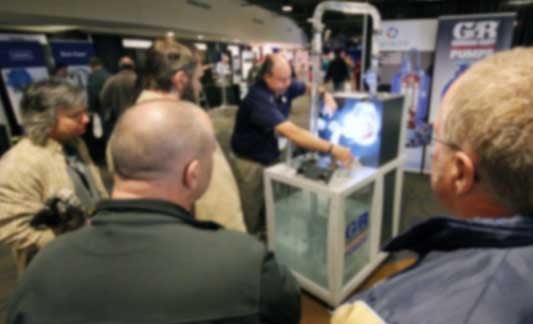Explore our broad selection of centrifugal and positive displacement industrial pumps, serving Wisconsin, Michigan, and Minnesota with top-tier solutions.

Centrifugal pumps are the industry standard for liquid transfer, converting rotational energy into hydraulic power through an impeller and volute. Ideal for handling clean liquids, these versatile pumps can also be engineered to transport solids, sludges, and slurries. As the most common pump type, they excel in various industrial applications.
Explore a diverse range of centrifugal pump designs to suit different applications. From vertical cantilever and multistage configurations to specialized options like recessed impeller, seal-less, and magdrive pumps, there's a centrifugal solution for nearly every fluid handling challenge. As Wisconsin's foremost authority on industrial pumps, Crane Engineering offers unparalleled distribution and maintenance services in Wisconsin, Minnesota, and Upper Michigan.










Positive displacement pumps excel at handling high-viscosity liquids, precise metering, and high-pressure applications. Unlike centrifugal pumps, these flow-generating devices deliver consistent output regardless of fluid viscosity variations. Ideal for transferring thick fluids, positive displacement pumps create suction to lift liquids and are essential for various industrial processes. As Wisconsin's foremost authority on industrial pumps, Crane Engineering offers unparalleled distribution and maintenance services in Wisconsin, Minnesota, and Upper Michigan.











Crane Engineering is Wisconsin's premier distributor and service provider of industrial pumps, drives, and monitoring solutions. We offer a comprehensive range of products including pressure alert sensors and alert gateways to optimize equipment performance and prevent costly breakdowns. Our expert team provides technical support and maintenance services to businesses and municipalities throughout Wisconsin, Minnesota, Iowa, and Upper Michigan. By partnering with us, you can significantly improve efficiency, reduce downtime, and extend the lifespan of your industrial equipment.
Not sure where to start? Our knowledgeable staff is ready to assist you in selecting the right solutions for your specific needs.


Newtonian fluid, non Newtonian fluid, rheopectic, thixotropic, dilatant... what's the difference between these liquid properties? More importantly, what does it matter?

The ability to read pump curves is essential to long-term pump performance. In new applications, they aid in the selection of a pump that meets performance requirements.

We’re all about making your job easier. That's why Crane Engineering is Wisconsin's go-to source for industrial pumps, industrial valves, and expert fluid handling support. We've invested heavily in technology and our team to deliver top-notch solutions that keep your operation running smoothly. From the smallest component to the biggest project, we're here to help you succeed.

For over 80 years, customers have relied on Crane Engineering to be the advisor that provides technical solutions for industrial challenges. Whether it is a pump rebuild or repair, preventative maintenance, or a customized wastewater treatment plant upgrade, Crane Engineering has the experts to keep your fluid process operations running. Based in Wisconsin and serving the Midwest, Crane Engineering is your expert for fluid handling solutions.
Headquarters and Service Center
Located outside Green Bay, WI
707 Ford Street
Kimberly, WI 54136
920-733-4425
OptiFlow Design and Build Center
1002 Truman Street
Kimberly, WI 54136
920-733-4425
Burnsville Service Center
12265 Nicollet Avenue
Burnsville, MN 55337
952-444-1949
Grand Rapids Service Center
26489 Industrial Blvd
Cohasset, MN 55721
952-444-1949
© Copyright 2024. Crane Engineering. All Rights Reserved. Privacy Policy.